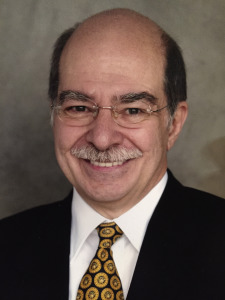
During his illustrious career at Cedars-Sinai, Dr. Diamond developed into an internationally renowned cardiologist, clinician, and educator. He made his greatest mark as an innovative researcher and creative thinker, compiling greater than 600 scientific publications during his career. Among his efforts, 3 stand out as seminal contributions because of how they influenced 3 different generations of cardiologists. These contributions have profoundly impacted how cardiovascular medicine is practiced today.
His first seminal work began in the late 1960s and early 1970s in a collaborative effort with world-renowned cardiologists Drs. Jeremy Swan and William Ganz, leading to the development of the Swan-Ganz catheter , a procedure that soon became the standard worldwide. Together with Dr. James Forrester, Dr. Diamond performed the first hemodynamic assessment of a patient with acute myocardial infarction and heart failure. Their research resulted in the widely used Forrester classification of acute heart failure.
His second seminal work that arguably resulted in his greatest claim to fame focused on the “application of Bayesian analysis to diagnostic testing, risk assessment and medical decision-making,” based on Bayes’ theorem first proposed over 250 years ago by Reverend Thomas Bayes. His work on this topic was published in 1979 in the New England Journal of Medicine . Known as the Diamond-Forrester classification of risk, it radically altered the way we think about cardiovascular testing and health care in general. Along with the development and use of the Swan-Ganz catheter, this body of work put Cedars-Sinai “on the map.” Even to this day, clinicians and investigators continue to be influenced by these concepts that now form the basis for determining the need for testing across medical fields. Based on this body of work, Dr. Diamond was awarded the 2004 Distinguished Service Award of the American College of Cardiology in recognition of his “profound contributions to medicine and the delivery of health care.”
The third major pioneering work of Dr. Diamond was in quality assurance, health care utilization, and disease management. In his later years, Dr. Diamond became a persuasive advocate for quality of care in our present era of cost control through the establishment of appropriate incentives that strike a balance between these 2 competing objectives—embodied in a strategy called “fee-for-benefit” that he first promulgated over 2 decades ago in his seminal article published in the Journal of the American College of Cardiology . This presaged the currently popular “pay for performance” trend in health care. Over the last few years, he was inspired by the potential of evidence-based medicine to energize health care reform by encouraging quality improvement and cost control through adherence to clinical practice guidelines. Thus, the original “fee-for-benefit” proposal evolved into a system of “evidence-based reimbursement” incentives whereby reimbursement is more closely aligned to the evidence of benefit. In recognition of these pioneering works and scientific contributions that forever changed the landscape of cardiovascular medicine, the Cedars-Sinai Alumni Association bestowed on him the “2009 Alumnus of the Year Award.”
Based on his recognized expertise, Dr. Diamond was frequently invited to lecture as a visiting professor all over the world. He was also a member of the Editorial Board of several prestigious medical journals and an advisor to the Institute of Medicine.
As a teacher, Dr. Diamond profoundly influenced generations of aspiring cardiologists through his insightful and rigorous training and innovative ideas, inculcating them with his critical approach to each phase of research, ranging from recognizing the often unappreciated biases shaping data collection, to a “feel for numbers,” to an appreciation for the probabilistic approach to clinical decision making. He was a mentor to many physicians, who have gone on to be leaders in their field. In addition to his remarkable intellect, Dr. Diamond remained a humble, caring, and sensitive human being and an exemplary role model for young physicians and investigators.
At his memorial, George Diamond was described an “analyst extraordinaire,” and who was well known among his colleagues as a “feisty iconoclast,” “uncompromising,” “hardnosed,” often “politically incorrect” but respected by many as a “critical out-of-the-box thinker,” “a brilliant, incisive mind who always displayed immense wisdom,” “one of the great philosophers of cardiology and medicine,” “the conscience of cardiology,” a “visionary” hailed as being “ahead of his time,” and a “true pioneer.” He took particular delight in “dispensing with medical dogma,” willing to take on the complacent acceptance of the orthodox to his last days. Cedars’ cardiology has been blessed with many bright stars over the years but few shone so brightly as George Diamond.
George is survived by his wife Oleta, and his children (Lisa and Nicole and their families). His family and friends will recall this witty, fun-loving, boisterous, iconoclastic thinker as “a maverick like no other.”
Disclosures
The authors have no conflicts of interest to disclose.
Stay updated, free articles. Join our Telegram channel

Full access? Get Clinical Tree


